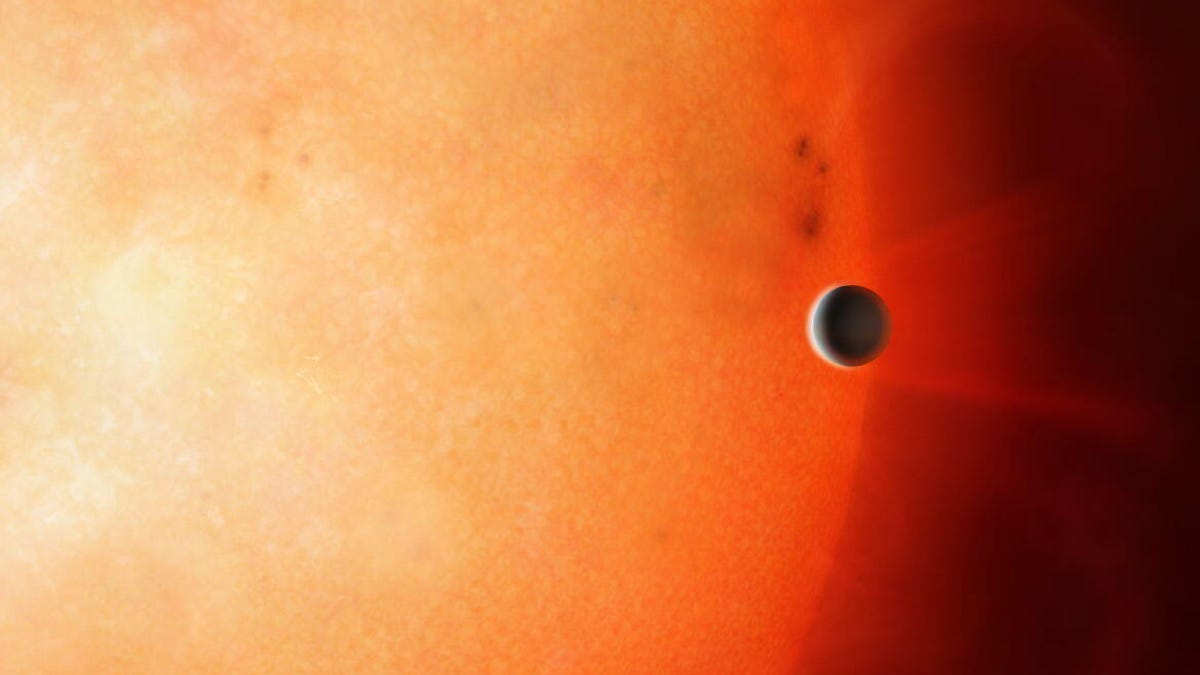Astronomers hope to watch this bizarre 'hot Jupiter' get destroyed
Scientists have spied a gas giant planet orbiting so close to its star it might be consumed in the next decade.

An artist's impression of a "hot Jupiter" orbiting close to a star
Astronomers have been watching a planet that whips around its star so closely and so quickly that they wonder if it could be spiraling toward its imminent destruction.
The exoplanet NGTS-10b is what's called a "hot Jupiter," a gas giant that orbits very close-in to its star. This particular inferno of a world is about 1,000 light-years away and makes one trip around its sun in less than 18 hours. That means a year there is shorter than a day here on Earth.
This is the shortest orbital period ever seen for a hot Jupiter, thanks to the fact that it circles at a distance only twice the diameter of the star. For some perspective, that would be like orbiting 27 times closer to our sun than Mercury.
A paper detailing the odd world was published Thursday in Monthly Notices of the Royal Astronomical Society.
"Although in theory hot Jupiters with short orbital periods (less than 24 hours) are the easiest to detect due to their large size and frequent transits, they have proven to be extremely rare," says author James McCormac, from the University of Warwick in the UK, in a release. "Of the hundreds of hot Jupiters currently known there are only seven that have an orbital period of less than one day."
The planet orbits so close that it could be near the point where forces from the star will eventually tear it apart.
"It's thought that these ultra-short (orbital period) planets migrate in from the outer reaches of their solar systems and are eventually consumed or disrupted by the star," says co-author David Brown.
That reckoning could be coming in the next decade if the planet's orbit appears to shrink as it spirals into its ultimate doom.
"Either we are seeing it in the last stages of its life, or somehow it's able to live here longer than it should," adds co-author Daniel Bayliss.
Astronomers hope to get a closer look at NGTS-10b and its atmosphere with the upcoming James Webb Space Telescope, that is, if the exoplanet is still around.

